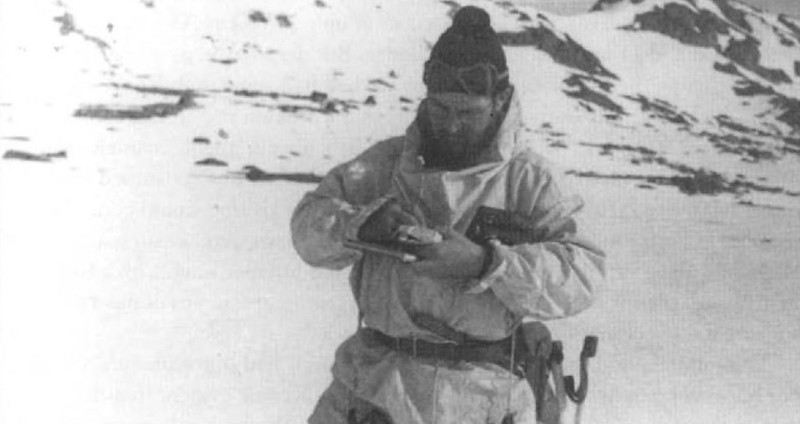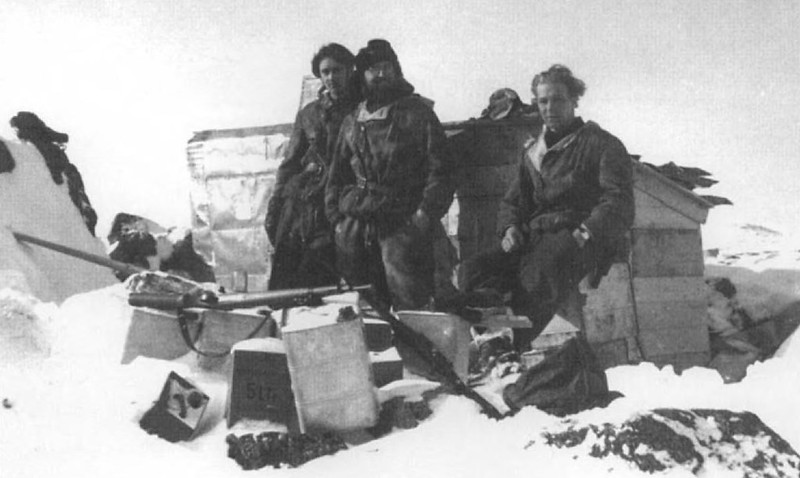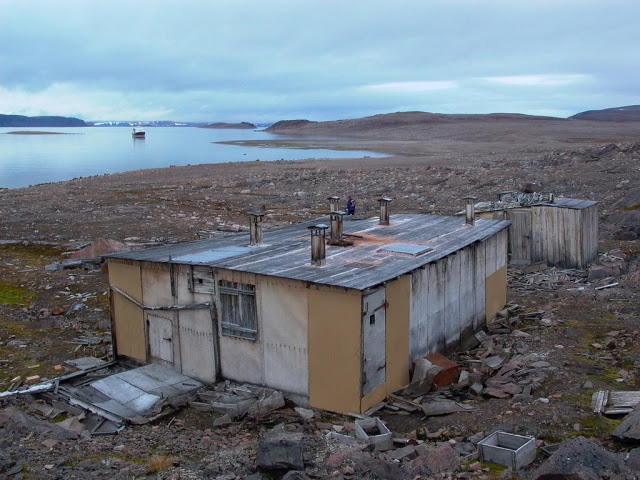The curious history of the last German unit that surrendered in World War II
Today marks 75 years since the celebration of Victory Day in Europe, which completed the defeat of Germany in World War II.
The last German units to surrender in World War II
Most of the German forces surrendered to the Allies between May 2 and 7, 1945. In the following days the last pockets of German resistance in Poland, Greece, Czechoslovakia and Yugoslavia, and the German detachments that had fallen, fell. It has become isolated in France (in Dunkirk and in the submarine bases of La Rochelle, Lorient and Saint-Nazaire) and in the Channel Islands. Still on May 23 the last German detachment was surrendered on the Islets of Minquiers, a British crown territory in the English Channel.
Likewise, several German u-boots surrendered to the Americans in the days following the surrender in Europe. One of them, U-858, was surrended on May 14 near Fort Miles in Delaware, USA. Other submarines took months to appear. U-530 was surrended on July 10, 1945, two months after the German surrender, in the port of Mar del Plata, in Argentina. In that same place another German submarine, the U-977, surrendered on August 17, 1945, when more than three months had passed since the end of the war in Europe. The curious stories of these two submarines have spread all kinds of stories about the possibility that senior leaders of the Third Reich, and even Hitler himself, might flee to Argentina.

Operation Haudegen: a top-secret German mission in Svalbard
Despite the time since the German surrender, in early September there was still a German detachment that had not surrend its weapons. During World War II the Germans attempted to install meteorological bases in Greenland, on the Norwegian islands of Jan Mayen and Bjørnøya and also on Spitzbergen, in the Norwegian islands of Svalbard, located in the Arctic Ocean. The latter was a cold and inhospitable place, but of great strategic importance, because its location allowed the emission of meteorological reports of great importance for military operations in Europe.
On August 5, 1944, a detachment of eleven men departed aboard the U-307 submarine from the Narvik naval base in northern Norway, heading for Spitzbergen on a top-secret mission called Operation Haudegen. The expedition's leader was Lieutenant Wilhelm Dege of the Naval Artillery, a scientist who had already traveled to Spitzbergen on pre-war research trips in 1935, 1936 and 1938. Dege returned to Norway in 1940 as a member of the Wehrmacht during the German occupation of the country. In 1944 he was selected to head the aforementioned meteorological mission, of which he would be military and scientific chief. With him were Herbert Rieche as deputy chief; Wilfried Maass, Deputy Chief Scientist; Arthur Baumann, meteorologist; corporals Hannes Semkat, Heinz Schneidr, Werner Schlösser, Siegfried Czapka and Heint Grams, radio operators and members of the meteorological service; naval artillery private Gustav Scheidweiler of the meteorological service; and private Josef Reyer, in charge of the camp.

The decisive role of the German detachment in the Battle of the Bulge
According to Lieutenant Dege, in a testimony published in the book "War North of 80: The Last German Arctic Weather Station of World War II", with the exception of him and Rieche, the average age of the expedition was 21 years. The youngest, Czapka, was only 19. The mission managed to reach Spitzbergen, setting up a weather station in the Rijpfjord Fjord, on the island of Nordostland, and immediately starting to send weather reports to the German base in Tromsø, in Northern Norway.

Although they had food for two years, life in Svalbard was not easy. Winter temperatures dropped to below -40ºC, and the detachment members had to be armed not only due to a possible confrontation with allied forces, but also due to the threat of polar bears. For a year they were sending their reports, which were of great importance in the German offensive of the Battle of the Bulge between December 1944 and January 1945.
Germany's surrender left them isolated and forgotten in the Arctic
On April 24, 1944, the German command in Tromsø asked them to prepare a landing zone for two planes near the Spitzbergen weather station. "The end of the war had been clearly foreseen, even by us," Lt. Dege wrote. Surely eager for an upcoming homecoming, members of the German detachment on the island quickly proceeded to remove the irregularities from the ice in the bay and formed a cross with long pieces of cloth to serve as a signal to the pilots. However, those planes never arrived.
On May 2 they received the news of Adolf Hitler's suicide on the radio. On May 8, 1945, the Tromsø command post informed them of the German surrender and ordered them to destroy both the weather reports and the rest of the documentation. They carried out the orders and burned the secret documents.

On May 9, Scheidweiler intercepted meteorological reports sent by the Soviets from Odessa. They were the first to receive unencrypted, a clear sign of the end of the war. The Spitzbergen detachment remained in contact with Tromsø until May 24, disobeying allied orders. Thereafter they received no further news from the command in Tromsø or Germany. They had been left alone and abandoned. They had no possibility of returning to their homeland by their own means, since they only had a rowboat. In the following months they continued to make meteorological observations and also explored the island, collecting scientific information. They collected all those documents in a metal box that they buried 50 meters south of the weather station.

A solemn surrender to a Norwegian seal hunter
The German detachment continued to broadcast over the frequency of the weather station, hoping that someone would find them, but there was no response. Finally they sent distress messages over the frequencies used by the Allies, which ended up being received by the Norwegians. On September 2, 1945, World War II came to an end with the surrender of Japan.
On September 3, the Norwegian ship Blaasel, led by Ludwig Albertsen and dedicated to seal hunting, arrived in Svalbard to rescue them. Four months had passed since the German surrender. Upon boarding the Norwegian ship, Lt. Dege handed his Luger pistol to Albertsen in a solemn gesture of surrender, something that impressed the Norwegian captain, who asked the German officer if he could keep the weapon. A surrender document was drawn up which was signed by Dege and Albertsen: it was the official surrender of the last German unit.

Post-war and the Haudegen Station today
The eleven members of the Svalbard detachment spent several months as prisoners of war, and then returned to their country, finding it devastated and sunk in misery. Those eleven soldiers were separated by the Iron Curtain that divided Germany in the postwar period and they never met again. Lieutenant Wilhelm Dege worked as a professor at the post-war Dortmund Pedagogical University. He died on December 21, 1979 in Suderburg. In 1985, his son Eckhart managed to retrieve the metal box buried in Svalbard with the detachment's documents in good condition, along with documents written by detachment members. Curiously, to this day the Haudegen Station is still where those German soldiers left it, at coordinates 80°02'46.0"N 22°31'04.8"E, and it is still used as an emergency shelter.
Bibliography:
- "War North of 80: The Last German Arctic Weather Station of World War II", by Wilhelm Dege.
- "The Last German Surrender – Svalbard / Spitsbergen, Norway", in LandmarkScout.com.
- "Operación Haudegen (10-9-1944)", in Exordio.com.
---
Main photo: Wilhelm Dege. From left to right, Chief Scientist Wilfried Maass, Corporal Hannes Semkat and Private Josef Reyer on a tour of Svalbard in March 1945.
|
Don't miss the news and content that interest you. Receive the free daily newsletter in your email: |
- Most read
- The 'hole' without civil flights around Paris during the opening of the Olympic Games
- Stunning footage of the F-15QA Ababil in flight recorded from its cockpit
- The firearms used by the Pontifical Swiss Guard, the smallest army in the world
- This is the driver station of an M1 Abrams tank and the impressive start of its engine
- The first photo of an F-16 fighter with Ukrainian insignia and the details it has revealed
- Eurofighter vs F-35: the opinions of professional pilots on these advanced fighters
- The new CADPAT (MT) digital camouflage of the Canadian Armed Forces

 ES
ES







Opina sobre esta entrada: